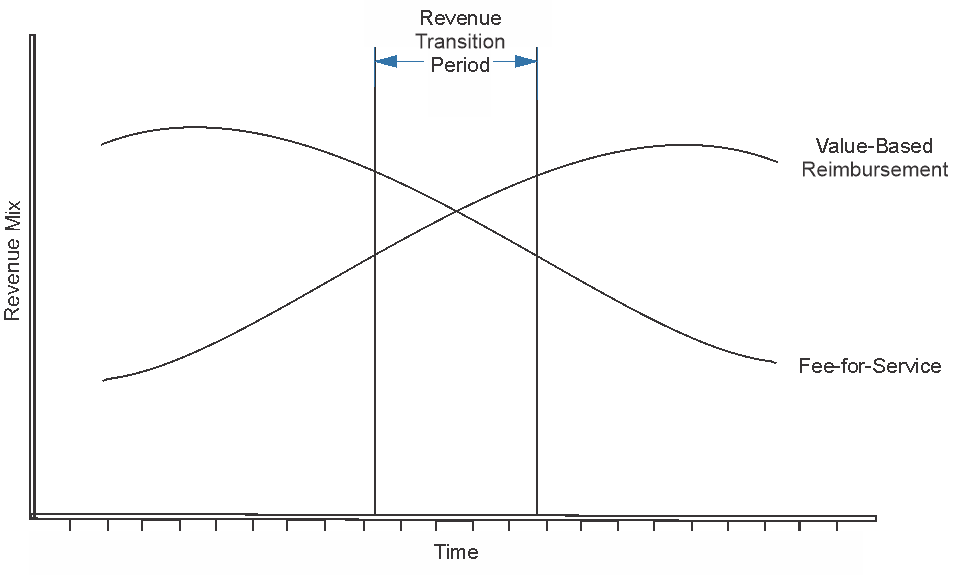The Transition to a Value-Based Payment System
Ask any
provider and they will tell you they have two primary
goals: 1. provide quality patient care, 2. do that with
manageable costs. To meet those goals, however,
technology must be used.
Medical practices, home health providers, and hospitals
all need to be able to capture patient data at the point
of care. That data then needs to be examined so that the
provider will have a idea of their patient population.
And once the provider has their data analysis finished
they can begin participation in a Value-Based Payment
Model.
The Challenges
There are three main challenges providers face in the transition
from a fee-for-service payment model to a value-based one.
| 1. Providers need to
reconcile value-based payments in a
fee-for-service environment.
2. Providers need to be able to
track a wide variety of quality measures.
3. Providers need to optimize
their margins while revenue decreases. |
Let's examine each.
1. Providers need to reconcile value-based payments in a
fee-for-service environment.
Most of the value-based payment contract for acute care
are shared-savings programs. Remember, these are a good
first step into the value-based payment arena because
they allow the provider to participate in a value-based
payment model without the downside risk usually found in
value-based payment environments.
Hospitals participating in a shared savings payment model for the
first time need to keep track of two different payment
systems throughout the year. Medicare continues to
reimburse on a fee-for-service basis. At the end of the
year, Medicare calculates shared savings bonuses and
pays them. Using the benchmarks Medicare developed at
the beginning of the provider’s participation in the new
payment arrangement, their performance is compared to
the fee-for-service population. If they were able to
care for their patients at a lower cost, and still make
the care goals, they get to share in the savings. But
these savings are only paid at the end of the year. For
this reason, in order for the provider to maximize their
chances for a piece of the savings they need to know
each patient group they treat, what will their financial
performance be and how will that compare to their
benchmarks.
2. Providers need to be able to track a wide variety of
quality measures.
Value-based payment models offer incentives for
providing quality care at a savings, and these are paid
out based on performance compared to certain quality
measures. Hospitals, for instance, have been submitting
quality measures for programs such as the Hospital
Outpatient Quality Reporting (OQR), Hospital Inpatient
Quality Reporting (IQR), and Physician Quality Reporting
System (PQRS) for years.
These new programs are now tied to the incentive
payments and penalties they receive. Providers need
quality data to help keep them on track throughout the
year. Providers don’t want to learn at the end of the
year that their reimbursement is going to be reduced
when it’s too late to do anything about it. Better to
track performance accurately and make adjustments
throughout the year to those areas that need it.
3. Providers need to optimize their margins while
revenue decreases.
In order for providers to meet their value-based payment
goals they will need to reduce the utilization of
resources by patients, which in turn (remember this is
still a fee-for-service billing environment) will
decrease their volume of procedures and, therefore,
revenue (less patient visits means less revenue). This
is necessary In the long run for success in a shared
savings model, but short-term it means less money for
the provider. The graph below shows the “Revenue
Transition Period” where fee-for-service revenues drop
while value-based revenues increase.
As we will see there are some changes which need to
happen at the provider level.
|
 |
3 Key Areas for Success
While margins decrease, providers need to concentrate on three key areas:
1. Managing their shared savings programs so they can
maximize reimbursement.
Providers will want to manage the various programs they
are participating in so as to maximize their shared
savings payments, with the added bonus that they will be
improving quality and costs at the same time.
2. Delivering care in the most efficient way possible.
This means eliminating waste from every category, be it
non-standardized care, unnecessary services being
provided, to patient injuries.
3. Increasing the volume of patients. This is
absolutely necessary in order to make up for the loss in
revenue attributable to the increased efficiency
realized by streamlining operations (less billable procedures means less revenue, but more
patients can make up that lost revenue).



